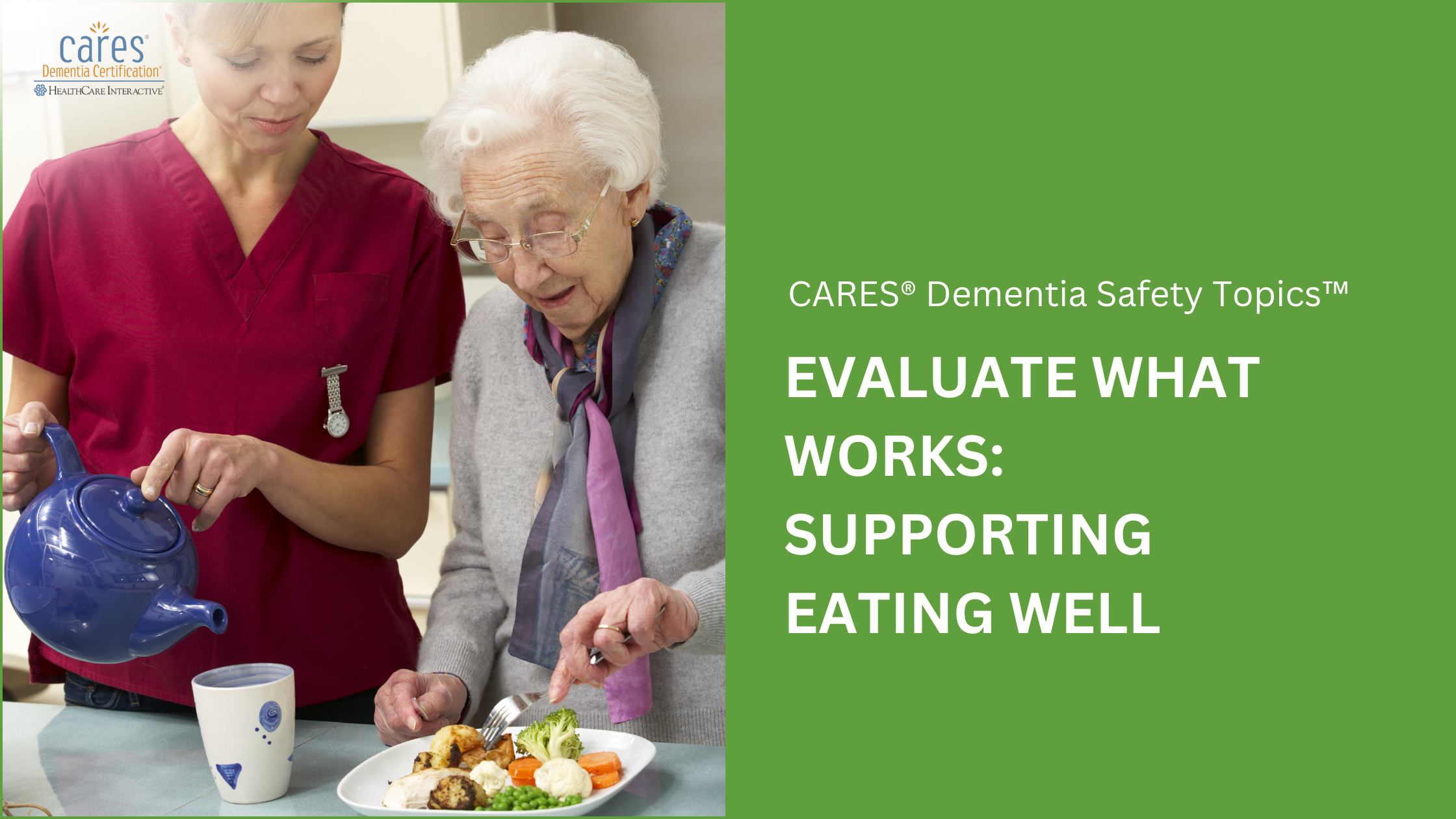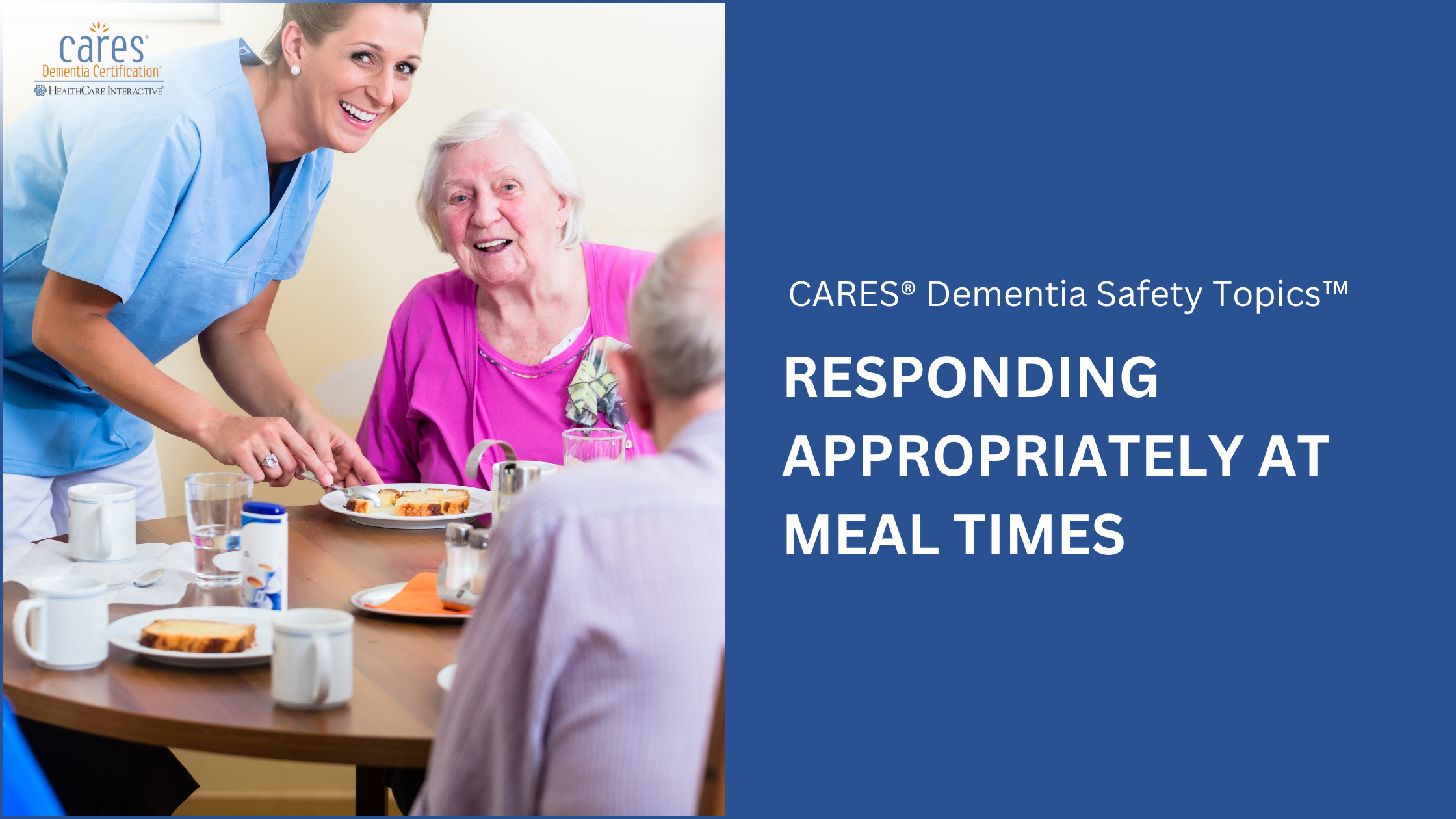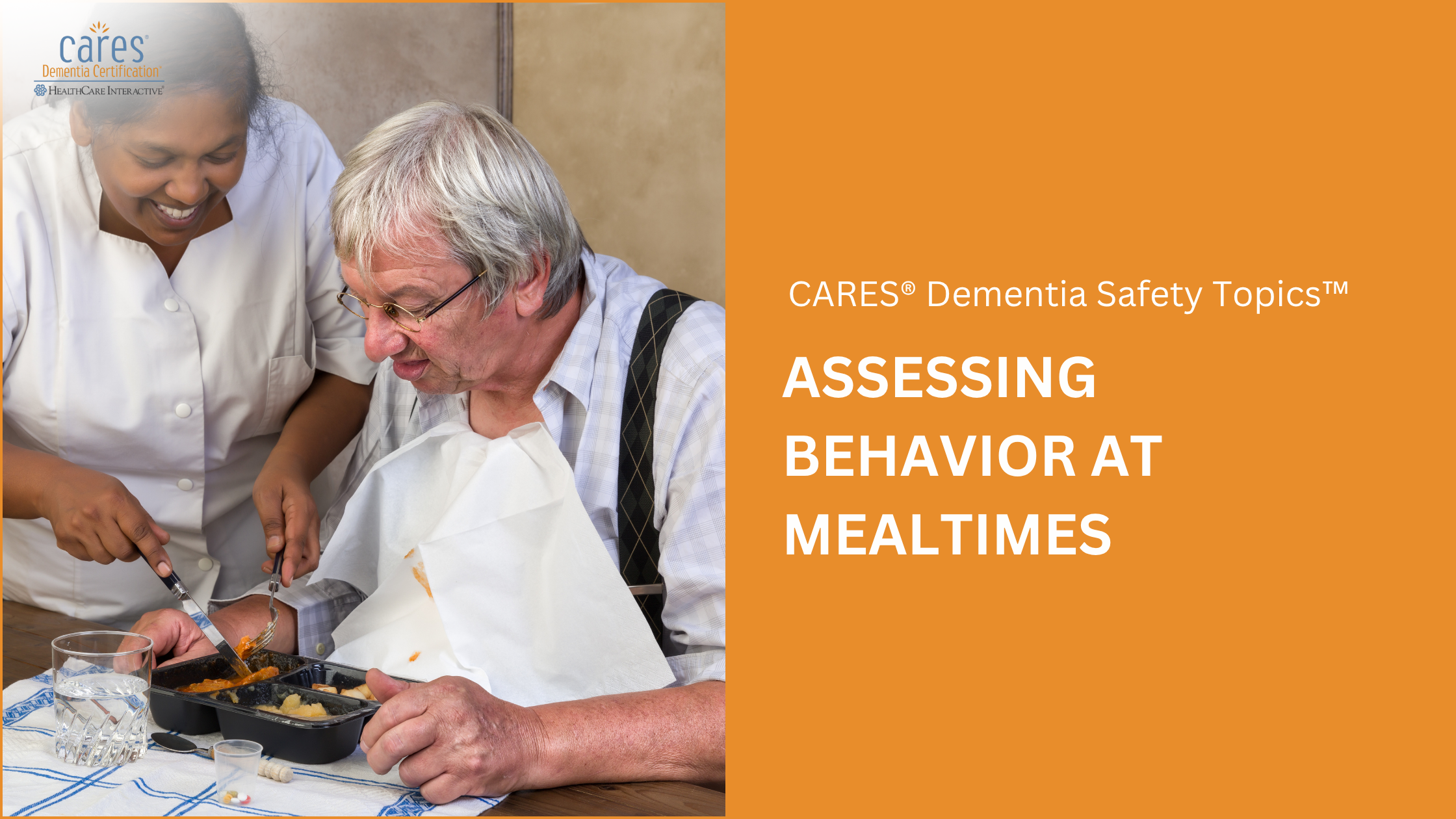In dementia care, it’s not just about offering support—it’s about offering the right support. That’s why the fourth step in the CARES® Approach, “E – Evaluate What Works,” is so important. After you’ve connected, assessed, and responded, the next key step is to pause and reflect: Is this working well for the person in my care?
When it comes to eating well, evaluating what works becomes even more essential. People living with dementia may face challenges with appetite, food preferences, chewing, or swallowing. Caregivers need to be observant and flexible to ensure mealtimes are not only safe, but also enjoyable.
Learning Through Example: Barb and Ann
This is a very informative interaction between Barb, a nurse, and Ann, a woman with dementia. Their mealtime routine offers a powerful lesson in how thoughtful caregiving can encourage better food intake and emotional comfort.
Here are some key takeaways from Barb’s approach:
• She prepares Ann for what’s next
Before offering each bite, Barb lets Ann know what she is about to do. This simple explanation helps Ann feel more in control and less startled by unexpected actions.
• She observes and adjusts
Barb carefully watches Ann’s reactions and constantly checks in— “How is that bite?” This helps her identify what Ann enjoys and when to slow down or pause.
• She stays calm and patient
Barb’s calm demeanor creates a relaxed environment, which helps ease Ann’s anxiety and makes eating a more comfortable experience.
• She knows Ann’s best time for meals
Understanding that breakfast is typically the best meal of the day for Ann, Barb puts extra effort into making that experience a success—both nutritionally and emotionally.
• She respects Ann’s preferences
Barb doesn’t push foods Ann dislikes. If something doesn’t go over well, she doesn’t offer it again. This builds trust and makes mealtime a more positive experience.
• She creates a calm eating environment
Keeping distractions, noise, and clutter away helps Ann focus on her food and feel safe—an important factor in dementia-friendly dining.
Why This Matters
Mealtime is more than just eating. For someone with dementia, it’s a deeply sensory and emotional experience. By evaluating what works—like Barb does—you create a supportive space where the person feels heard, respected, and nourished.
It’s not just about the food. It’s about how it’s offered, when it’s offered, and where it’s offered. All these things matter.
Your Role as a Caregiver
As a caregiver, your job is part observation, part intuition, and part adjustment. What worked yesterday may not work today—and that’s okay. The key is to stay engaged and responsive.
Ask yourself:
• Is the person enjoying the food?
• Are they showing signs of stress or calm?
• Should I try a different environment or time of day?
Sometimes the smallest change—a softer voice, a quieter room, a better time—can make the biggest difference.
If mealtimes feel challenging when caring for someone with dementia, the CARES® Approach can help guide you. We’re here to support you on this journey—enjoy 10% OFF any training and certification program with code SunnyJuly at checkout. Offer valid through July 31, 2025.



